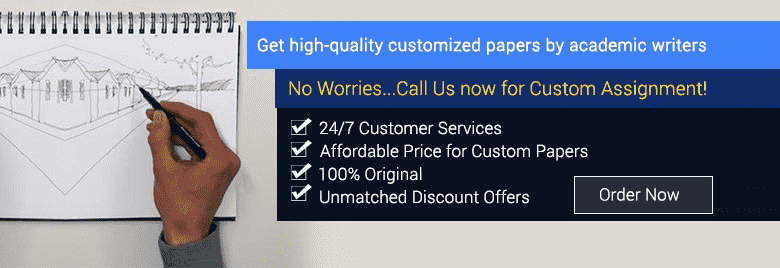Introduction to Organizations And Behavior
It is been said that every organization operate under different environment and factors that affects its employees and working process of an organization. This not only affects the groups but also individual as well. To control them, different styles of leadership are being followed in an organization so as to inspire employees and also help them to motivate them. By using the different leadership style and techniques organization gets the help in achieving efficiency in all departments of an organization. In this report contrast is being showed between two organization i.e. apple and TESCO (Beck, 2003). Here contrast will be discussed in respect of organizational culture and structure. At last in this study a brief conclusion will be drawn that will describe the essence of this report.
Assignment Prime is an online assignment writing service provider which caters the academic need of students.
Get Best Pricing Quotes Free Samples Email : help@assignmentprime.com Order NowLO1: Understand the Relationship between Organizational Structure and Culture
1.1 Compare and contrast different organizational structure and culture
Every organization decides their structure and culture on the ground of goals and strategies. Report explains the structure and culture of Apple and TESCO. Both Apple and Tesco owing to the size of firms follow hierarchical structure. However, there is still a huge difference in the two structures In TESCO retail outlet, the hierarchical format is comprised of different levels and people in it. Information passes in both ways being downward in the form of rules, goals and policies and upward in the form of reward, recognition and result (Daenzer, 2009). On the other hand, Apple as a part of its hierarchical structure puts more focus on proper decision making. They put more emphasis on change and even their employees are also passionate enough to bring change according to the time.
Difference is also present in both firs on behalf of cultures. TESCO has followed clan culture by providing better facilities to employees in form of mentoring and coaching so that their stress on job may remove and efficiency may increase. Cheaper products have been provided so that to keep the customers loyal and to make the staff members happy. The culture of Apple is based hierarchy where belief is that self provoked individual will work hard only in the case when they do not have a dominating boss (French, 2011). It is being found that earlier decision was taken by board of director and other higher authority and then the decided task was delegated to lower level of employees.
1.2 Impact of organizational structure and culture on the performance level
By defining the organizational culture and structure has got a crucial impact on overall organizational performance. These are required to be done so as to achieve the goal in a disciplined way. Presence of a proper structure and culture further assists in employees to work in team for the organizational success. Good culture favors employees to pay more attention to satisfying the needs and demands of the customers. It creates additional new opportunities for its patrons as well as for its staff. The organizational structure and culture of Tesco majorly focuses on the area of satisfaction to the customers. They feel that this satisfaction will achieve only when they come up with innovation and with some attractive products. Taken as a whole business performance of Tesco has been enhanced as the policies are stretchy in nature and with the help of flexible policy; a sound organizational culture has been created (Gunkel, 2006).
1.3 Discuss the factor which influence individual behavior at work
There seems various responsibility of an organization towards their employees in respect of equal opportunity, disable discrimination act, employment protection act; employment relation act and ethical issues. These all are being formed to support employees at work place in terms of their fair treatment, proper safety of their health, maintaining relation etc. Some other factors that affect the behavior of individual at workplace are as:
Personal employee attributes: Employees values, perception, abilities and expectation related to their job profile also affects the individual behavior (Hiriyappa, 2009).
Leadership: Leadership style of a leader also affects the performance of an individual. An organization can follow different leadership styles like as autocratic, democratic and laissez-faire leadership.
Job satisfaction: Satisfaction out of job can be taken out through motivation, reward and recognition in an organization. Tesco pays more attention to motivate its employees to work in an efficient manner and thus can achieve high satisfaction from the employees (Hoffmann, 2007).
Working environment: Individual behavior is highly driven by the environment of work where they perform their operation. Proper coordination as well as direction should be there in between the employees so that to maintain the flow of information in all the departments.
LO2: Different Approaches to Management and Leadership
2.1 Compare the effectiveness of different leadership style in different organization
Different organization follows different leadership style and this adoption of style is based on the type of work that has to be performed in an organization. Suitable leadership style can be adopted in the organization according to the nature and relationships with the employees (Iqbal, 2011). Different leadership styles are as follows:
Autocratic leadership style: In this type of style, leader and his decision is everything. They never consult with their co-members in taking any decision. They just direct their members and get the work done.
Consultative leadership style: Such leadership style is being followed where major decision has to be taken. In this leader conduct a brain storming session and consult their ideas with their members and then comes on the ultimate and final decision (Cun, 2012).
Participative leadership: It’s just like consultative, but not fully. In participative leadership style leader never ever take decision alone infect they take their decision after taking opinion of other as well. They just note down the opinion and collectively tale the decision for their work.
Laissez-faire Leadership style: In this type of leadership, the leader allows his subordinates to work freely. All the resources and information have been provided to them to work. The subordinates can take all the decisions as they are allowed to plan and organize their work according to their wishes. The leader allows the subordinates to set their own goals and objectives (Fairholm, 2004).
2.2 Organizational theory underpins the practice of management
Organizations is defined as an intentionally harmonize social component shaped by groups in society to accomplish unambiguous purposes, frequent aims and objectives by way of premeditated and synchronize activities. There exist 2 form of organization i.e. formal and informal organization (Gill, 2008). The organizational members of Tesco works on four principles of scientific management and that are:
- Embracing of work methods based on scientific study
- Scientific selection of the employees and training should be provided by the management
- Auditing of the workers performance in order to check the effectiveness of the scientific methods
- Proper division of work should be there between the worker and managers so that to ensure their performance level (Liqun and et.al., 2012).
Weakness
Whole organization is based on the concept of scientific management and principles. This scientific principle helps organization to increase tier productivity with efficiency. More over along with the productivity of goods it also helps in enhancing the efficiency of employees but the main limitation is that it ignores human aspect of employment. Money is important for motivation at workplace. The best ways to motivate the employees is creation of better communication between managers and the workers and also to work in teams and groups (Mayer, 2008).
Strengths
Above discuss about the weakness of this specific model now here some strength is being discuss about this model. First and foremost advantage of this model is that it emphasizes on team work in an organization. In this each and every member associates with each other and so as to entertain team effort in an organization. Moreover, this model also entertains the reward and recognition for hard work (Melewar, 2006).
Organization runs on a proper theory, without theory it is like having no direction of work and management. For the performance of employees also there exist and followed some theories so that to achieve the goals of the organization but this affects their own principles and moral values. In the same way, Management theories underpin the personal aspects of employee personality. For instance, suppose an employee does not agree to a specific policy then it is the duty of the manager to make him ready to work (Ruiz and et.al., 2004). The main duty of the manager is to satisfy the employees in best possible manner.
2.3 Different approaches to management used by different organization
Many authors have profound many approaches for management; some of them are shared as below:
Empirical technique: In this type of management approach, management or managers learn from other people who are experienced in the respective field and upon their guidelines perform their work in an organization (Skowronski, 2012).
Human behavior approach: This approach focuses mainly on maintaining relationships with the employees as well as with the customers. This approach is useful for consultancy firms as this business needs to maintain relationships with others.
Decision approach: This approach is proven to be the most satisfactorily and efficient approach as it proves open door policy i.e. involves employees in decision making process (Smith, 2003). This ensures the organization with variety of information and thus can reach to the appropriate decision.
This approach is useful for advertising and designing companies.
Contingency approach: Contingency theory, in the context of organization structure, argues with the intention of an organization, to be valuable, must adjust its structure in a manner consistent with its work environment, know-how and other relative factors. Environmental determinism speculation states that ‘in-house organizational responses are utterly or primarily bent, prejudiced or strong-minded by peripheral environmental factors (Svyantek, 2003). Outwardly, the existing turbulent environment calls meant for elastic, pliable and reactive structures; in olden times, a more banal environment privileged the practical approach.
Operational approach: Operational approach is highly concerned with various concepts and functions and is given more priority as compare to other. These functions are develop with so care and at the end are being implemented for well being or better performance of an organization (Taber and Mayfield, 2010).
Social system approach: In case of social approach, it is meant to develop to maintain a proper harmony or healthy relation between workers at work place so that a family kind of environment can be developed and this will help organization in increasing their performance (Waltz, 2009).
LO3: Ways of Using Motivational Theories in Organizations
3.1 Impact of different leadership style on motivation in the organizations
In an organization, management practices different leadership style and in turn it has a great impact on the atmosphere of the organization and their impact can also be seen on the employee inspiration. Autocratic leadership style has a tendency to impact motivation in a negative manner. Here, leader may pressurize the employees to achieve goals within the time framed while on the other end management thereby lowering the morale. On the other hand, democratic leadership style pays more attention towards the interests of the employees thereby enhancing the work capacity. Main aim of management is to boost up the morale and confidence of an employee. Charismatic leadership style is based on a vision. If there has been framing of vision in a proper manner, then followers are motivated towards execution of vision.
3.2 Comparison of different motivational theories within the organization
The theories of motivation reveal different types of techniques that can be applied in the motivation process. Maslow’s theory is one of the best theories. It is comprises of 5 essential elements i.e. psychological need, safety & security, social needs, self esteem and last is self actualization need. This theory on its first level explains about the basic need of an employee (food, shelter and cloth), then demands for their security on job and for life (life insurance, housing and accommodation), then headed to love, affection and family treatment on work in social need. In self-esteem they demands for respect from their colleagues and at last wants to full fill their own dreams (Greenberg, 2003).
Next theory that is being used is ERG theory. First one is the existence needs which include a person’s physiological and physically needs and proper working conditions. Relatedness needs include the need of individual to interact with others, to receive public recognition and feel safe and secure around the world. Growth needs consists of a person’s self esteem needs to develop the personality (Hoffmann, 2007).
3.3 Usefulness of motivation theory to the managers
Motivation for employees is very much needed to improve their efficiency on work. It helps in following ways:
- Improves efficiency and enhances efforts: Management of TESCO on a continuous basis motivates their employees so as to increase the morale of their employees in different stores/outlets.
- Development of friendly environment: Motivation or motivated employees helps to develop family sort of environment at work place and support each and every one in their work (Hiriyappa, 2009). This can lead to maintain better coordination among all the employees.
- Resolution of conflicts: Now a day’s management intentionally wants some conflict as it boosts up the speed of work but in case of motivation, it helps in removing large confusion in an organization.
- Organizational growth: Motivation is dependable to develop and amplify the effectiveness in the feat of the workforce of the organization. Hence, it helps the board of Tesco to pull off organizational goals and objectives (French, 2011). This makes an organization to nurture in the spirited environment.
- Potential growth: The manager of Tesco wishes to expand the augmentation aspects as the entire achievement and movement of the association depends on the functioning effectiveness of the manager (Greenberg, 2003). Motivation helps an organization to turn into more competent.
LO4: Mechanisms for Developing Effective Team Work in Organizations
4.1 The nature of groups and group behavior within organizations
The members of the group interacts with each other so that to achieve the targets and goals of the organization and this thereby identifies their job profile. A specific task is there in the formal group that is arranged in such a way that accurate separation of work can be made. The case of informal group lacks the formal structuring of the employees. The informal group does not have any formalities (Liqun and et.al., 2012). Large sized groups have high degree formalized structure and maintain the proper and sequenced flow of information between all the departments. The number of employees involved in this task affects the motivation of the employees. The main aim of motivation is to enhance the efforts of the employees so that to get to the desired goals (Hiriyappa, 2009).
4.2 Factors that may promote the development of effective teamwork in organizations:
There are a number of factors that play a vital role in the effective development of team work in the organization. Some of the factors are as follows:
- Effective communication between team members can be enhanced when having proper system of communication. Effective communication helps the business of Tesco to facilitate clear cut policy for conflict resolution (Daenzer, 2009).
- Work diversity, will help Tesco to expand and diversify the operations. Creation of innovative ideas and suggestions enhances the success of team work and this thereby enhances the working efficiency of the employees.
- Team building techniques, The development of team is based on the knowledge gained through experiences from others. On the other side this may also lead to conflicts because of having differences (Melewar, 2006).
Delegation of authorities, Delegation of authorities’ impacts the team work in an organization as each and every employee will be delivered with a task.
4.3 The impact of technology on team functioning within a given organization
Tesco is building bring into play of valuable and pioneering technologies so as to dole out the customers in a better way. By way of up to date and newest technology Tesco has erect a podium in order to progress communication and synchronization (Gunkel, 2006). The technological guidance workshops helped Tesco to improve the performance of its employee which thereby gives benefits to develop the team work effectively. With the help of new technologies, Tesco can bring more passion in the working efficiency of the employees so that to make them more responsible towards their job. Innovation can help the employees to work attentively and this also reduces boredom. Latest technology can help the employees of Tesco to create positive and friendly environment in an organization (French, 2011). It has been seen that sometimes the employees of an organization disagrees to adopt technology because sometimes organizations in order to reduce the operational costs terminate the employment of employees
CONCLUSION
From the above report it s being concluded that structure and culture of an organization has a great impact on individual and group in an organization. It is also been understood that there can be many ways to motivate a manager or employees. The process of motivation is required to follow so that to retain the employees in an organization and it is also useful to maintain long term relationships. Technology is the main factor that brings drastic changes in the functioning of the team members. Hence it can be concluded that employees are the most important part of an organization that can be managed properly so that to achieve the targets and it also helps an organization to run the business smoothly.
REFERENCES
- Beck, C. R., 2003. Motivation: Theories And Principles. 4th ed. Pearson Education India.
- Daenzer, E. B., 2009. Quantitative Correlation of Leadership Styles and Job Stress in a Midwest United States Auto Company. ProQuest.
- French. R., 2011. Organizational Behaviour. 2nd ed. John Wiley & Sons.
- Greenberg, J., 2003. Organizational Behavior: The State of the Science. 2nd ed. Routledge.
- Gunkel, M., 2006. Country-compatible incentive design [electronic resource]: a comparison of employees' performance reward preferences in Germany and the USA. Springer.
- Hiriyappa, B., 2009. Organizational Behavior. New Age International.
- Hoffmann, S., 2007. Classical Motivation Theories - Similarities and Differences Between Them. GRIN Verlag.
















